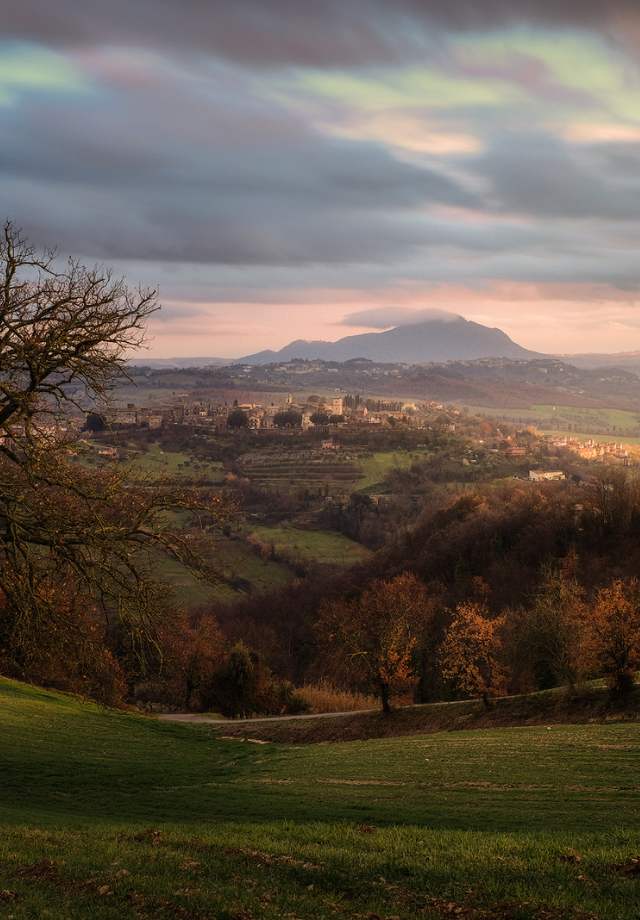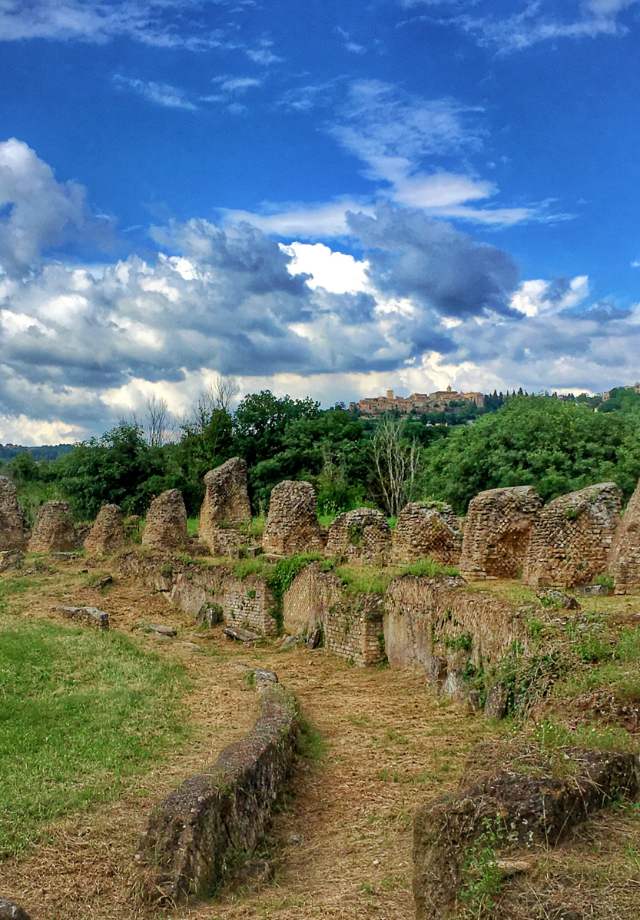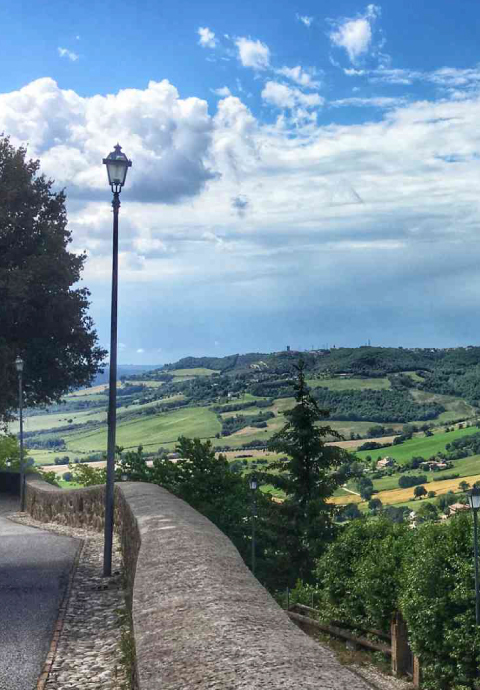It was precisely because of the presence of the Via Flaminia, traced over pre-existing older roads by the censor Gaius Flaminius Nepot in 220 B.C., and the presence of the Tiber and a river port-now called Porto dell’Olio-that Ocriculum first, and Otricoli later, had great fortune.
And it was in the early medieval period that the distinctive layout was built: the Borgo, with its characteristic arcades along the Via Flaminia that guarded inns, taverns and a post station; and the Castle protected by two gates, walls and towers.
It is precisely from Porta Major that one can enter the historic center rich in buildings ranging from the Middle Ages to the Renaissance and churches such as the most important one, the Collegiate Church of Santa Maria Assunta, which is located at the highest point of the hill perhaps at the site of the ancient acropolis and temple dedicated to the goddess Valentia, whose very ancient cult is attested by sources, and by the findings of epigraphs on site, as characteristic of Otricoli.
The opposite side overlooking the Tiber valley is dominated by the Porta San Severino and a splendid panorama that can be enjoyed all year round. The Palazzo Comunale houses one of the town’s two Antiquarium, a place where, through a number of artifacts, it is possible to reconstruct the entire history of Otricoli.
The charm of the history of one of Umbria’s oldest villages
It was probably the ancient Umbrians who built the first settlement identifying the Ocar (=the mountain) – as found in the Eugubine Tables – as the site of a settlement and an acropolis that can perhaps still be read in the structures of the basement of the Collegiate Church Santa Maria Assunta. Some sections of the walls, in the part that looks to San Vito are reputed to date back to the 4th century B.C. but it is: the necropolis, including that of Cerqua Cupa that speak of an even older human presence, such as the presence of architectural terracottas or ceramics also near the area of Ocriculum, which date the settlement to a time at least around the 7th century B.C.
Ocriculum in the Roman period
The first attestation of Ocriculum by classical authors comes with Titus Livy who – Ab Urbe Condita – IX, 41, 20 – tells how, after the Battle of Bevagna in 308 B.C. people of Otricoli were welcomed among the friends of Rome acquiring a fundamental role on the border with Umbria and Sabina and a junction point for trade along the Via Flaminia and across the Tiber through the Porto dell’Olio.
After the social war Ocriculum, by virtue of the lex Iulia was ascribed to the Arniensis tribe and became a municipality ruled by quattuorviri. The monuments that are preserved such as the Theater, Amphitheater, Baths, and Great Substitutions show a flourishing life based mainly on trade and agriculture. As in Narni they made it a suitable place for vacationing: we know that Milone, a friend of Cicero, and Pliny the Younger’s very rich mother-in-law Pompea Celerina owned a villa there.
It was in December 69 CE that Vespasian’s troops, led by Antony Prime, stopped at Ocriculum itself to celebrate the Saturnalia.
A.D. 168 is an important date in Otricoli tradition: this is the date, according to a vulgate related to this saint, Victor of Otricoli was martyred in Syria. Otricoli’s patron saint is celebrated on May 14, and the evening before is the evocative “Landing” at the Porto dell’Olio, which commemorates the return of the body to its native village. From the same tradition came the unmissable re-enactment event Ocriculum AD 168, which, every last weekend in May, returns the archaeological area to the time of Marcus Aurelius.
Otricoli had to be crossed by the armies of the Greeks and the Goths between 542 and 552: it is at this juncture that the tradition of the miraculous episode of the Ocriculum bishop Fulgenzio (co-patron along with St. Victor) who stopped Totila and saved the town from certain destruction fits in.
With the Lombard invasions it is believed that the town along the river was completely destroyed and preferred to the one on high ground that we will find in the first documents with the name castrum Utricoli only in the 8th century.





